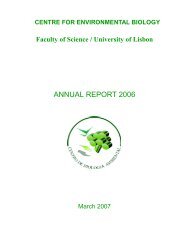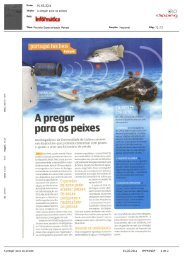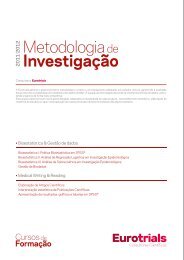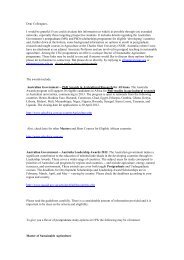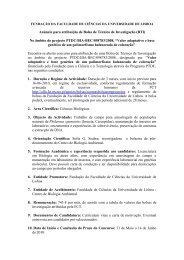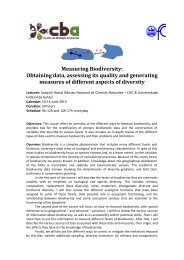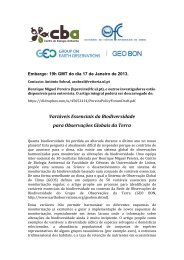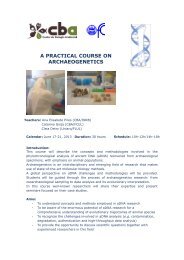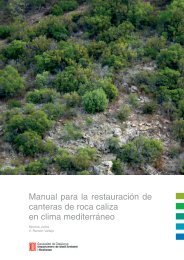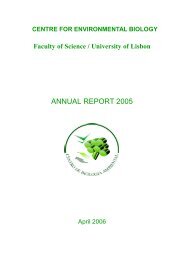European Red List of Vascular Plants - European Commission
European Red List of Vascular Plants - European Commission
European Red List of Vascular Plants - European Commission
Create successful ePaper yourself
Turn your PDF publications into a flip-book with our unique Google optimized e-Paper software.
islands (Corsica, Cyprus, the Greek islands, and Sardinia).<br />
Another area that flagged up as being <strong>of</strong> concern is the<br />
centre <strong>of</strong> the Pannonian Plain in Hungary.<br />
3.4 Major threats to policy plants in<br />
Europe<br />
The major threats to each species were coded using the<br />
IUCN Threats Classification Scheme. A summary <strong>of</strong> the<br />
relative importance <strong>of</strong> the different threatening processes<br />
is shown in Figure 8.<br />
The main threat to the threatened plant species in this<br />
group is intensified livestock farming, and especially<br />
intensive grazing activities have the worst impacts. Plant<br />
species are directly affected through livestock eating<br />
them or due to trampling and increased nitrification.<br />
The conversion <strong>of</strong> grasslands into agricultural land for<br />
livestock, arable farming or forestry is a serious threat<br />
leading to habitat loss or at least degradation. On the<br />
other hand, many species are in need <strong>of</strong> moderate<br />
disturbance and were thriving well in areas under<br />
traditional agricultural use such as extensive grazing.<br />
Whereas an intensification <strong>of</strong> agricultural activities leads<br />
to the disappearance <strong>of</strong> those species on one hand, the<br />
complete abandonment <strong>of</strong> these activities poses also a<br />
serious threat (listed under ecosystem modifications). The<br />
abandonment leads to changes in the vegetation dynamic<br />
and succession <strong>of</strong> woody plants and shrubs that lead to<br />
an increased competition and therefore disappearance <strong>of</strong><br />
plant species.<br />
Recreational activities such as hiking, mountaineering,<br />
or walking are the second biggest factor causing species<br />
to be directly or indirectly threatened. Ecosystems<br />
frequented by humans <strong>of</strong>ten notice a decrease in quality<br />
and the plants are in danger <strong>of</strong> being trampled. Skiing<br />
activities in mountain areas, for example, threaten the<br />
plant Campanula bohemica. Another example are species<br />
growing in sand dunes and beaches affected by vehicles<br />
accessing the coast, such as in the case <strong>of</strong> Anchusa crispa.<br />
Invasive alien species and problematic native species are<br />
particularly threatening the flora on the Canary Islands<br />
and Madeira but also in the Mediterranean. Introduced<br />
plants such as Carpobrotus edulis and Opuntia ficus-<br />
Carpobrotus edulis, native to South Africa has been introduced widely to the Mediterranean as an ornamental plant and now replaces native vegetation in many parts <strong>of</strong> that region as<br />
seen here at the coast <strong>of</strong> Cascais in Portugal. Photograph © Melanie Bilz.<br />
15



